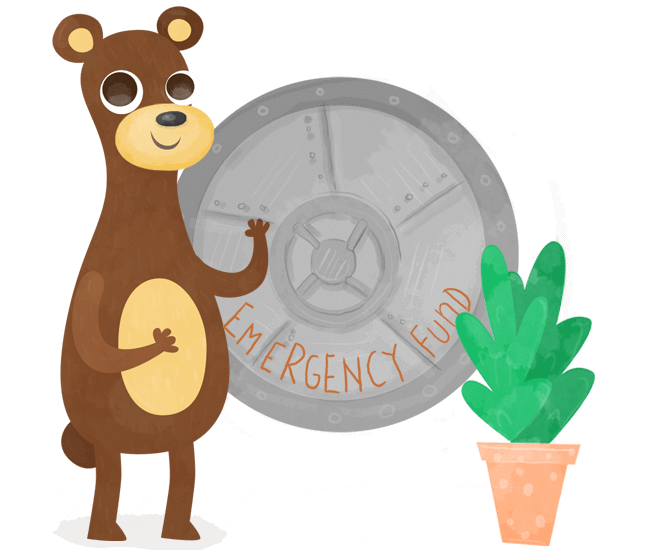
Whether they’re big or small, people experience financial emergencies all the time. One of the best ways to get through a financial emergency is to have an emergency fund.
An emergency fund contains easily accessible funds held either in cash, a basic savings account, or a tax-free savings account (TFSA). The purpose of this cash is to protect you financially in case of an emergency. For example, unexpected car repairs, vet bills, washing machine replacements, job loss, spilling coffee on your laptop… okay, you get the idea.
An emergency fund sits there, untouched, and waits for that unexpected cost to appear.
Everyone needs an emergency fund.
Even if you are focusing on paying off debt, not having any money set aside for emergencies could seriously dig you into a bigger hole.
It’s unfortunate, though, that almost a quarter of Canadians are living paycheque to paycheque and saving no money. If faced with an emergency, a quarter of Canadians would not be prepared. Don’t fall into this bucket.
As a best practice, you should look to save 3-6 months of after-tax income. There is an endless debate about this, and the truth is (like many personal finance rules of thumbs): it’s different for everyone. A family of 5 that owns a home and has 2 vehicles is going to need a larger emergency fund than a young couple with no children.
The general rule of 3-6 months should likely cover most situations, but the choice depends on a few life circumstances.
In order to figure out how large your emergency fund should be, it’s important to look at your debt first. If you’re carrying debt, the majority of your dollars are better used towards paying off high-interest, revolving debt like consumer debt (credit cards). In this case, save a small amount just to get you started while you pay off debt – move your debt payments to savings deposits once the debt is gone.
A smaller emergency fund will tide you over until you’re able to pay down that debt. However, if you’re carrying lower interest debt like a student loan, building up your emergency fund still makes sense.
As you grow your emergency fund (or any type of savings), you need to think about the best place to store this money. Ideally, you want a safe place that will keep safe all the money you’re working hard to put away.
Make your money work for you or you’ll always have to work for your money. This means forgoing a basic chequing or savings account and storing your emergency fund somewhere that will earn some interest while minimizing fees. When picking a place for your money, be sure to consider places that don’t have time stamps attached; you never know when you’ll need the money.
Every person’s situation is different, but two really good options for emergency fund savings are:
Both types of accounts will allow you to earn some interest and compounding while also being readily available.
The pros of storing your money in your TFSA is that you can just keep growing that money far past your set emergency fund amount and all that interest and growth will be tax free. You just have to be aware that you don’t overcontribute and you keep a close eye on your contributions and withdrawals, but Planswell will help you easily keep track of that.
3-6 months of net income doesn’t just fall out of the sky, we get it. Focus on building up your initial emergency fund by creating and sticking to a budget. Track your expenses to figure out exactly what you’re spending and where you’re spending it. We built a budget calculator to help you do this.
Once you have your budget under control, then you should focus on one thing: automating your savings!
For example, Planswell allows you to set up pre-authorized contributions to your TFSA so you don’t have to think about it and your savings grow automatically. Set up automatic contributions to your emergency fund each payday so that money moves to savings before you have a chance to spend it.
Putting savings on auto-pilot takes a lot of self-discipline out of the saving process, and ensures that you reach your savings goals. Plus, once you reach your emergency fund goal you’ll have such great habits you’ll continue to build up further savings – perhaps for a new home!
YOUR FREE FINANCIAL PLAN
The best plan also has the best price.
Build your free plan today.
Start now